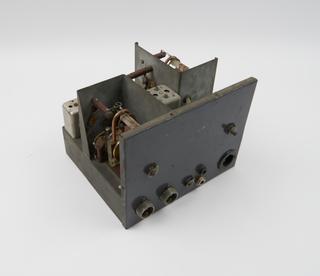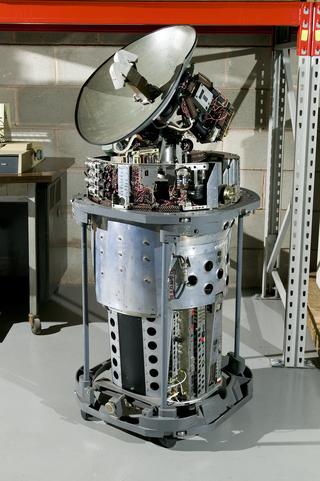
H2S Radar
- Made:
- 1945-1955



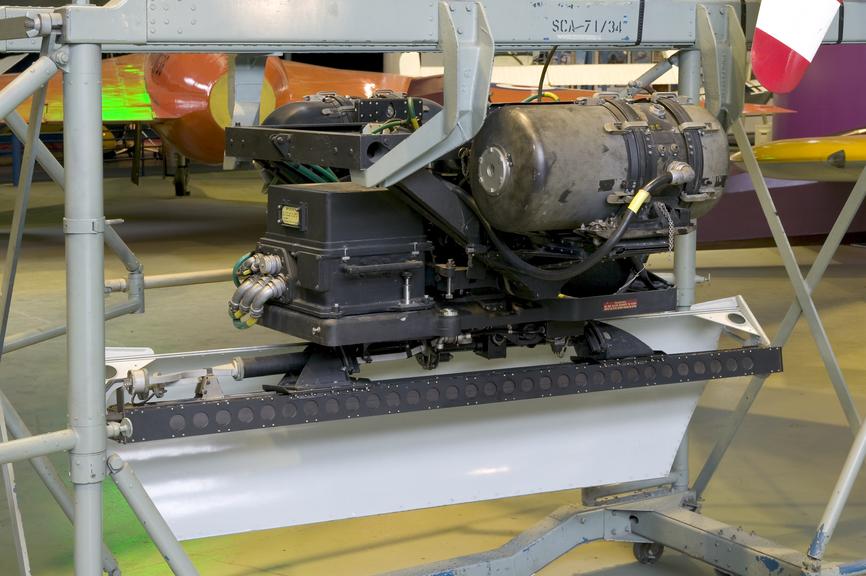
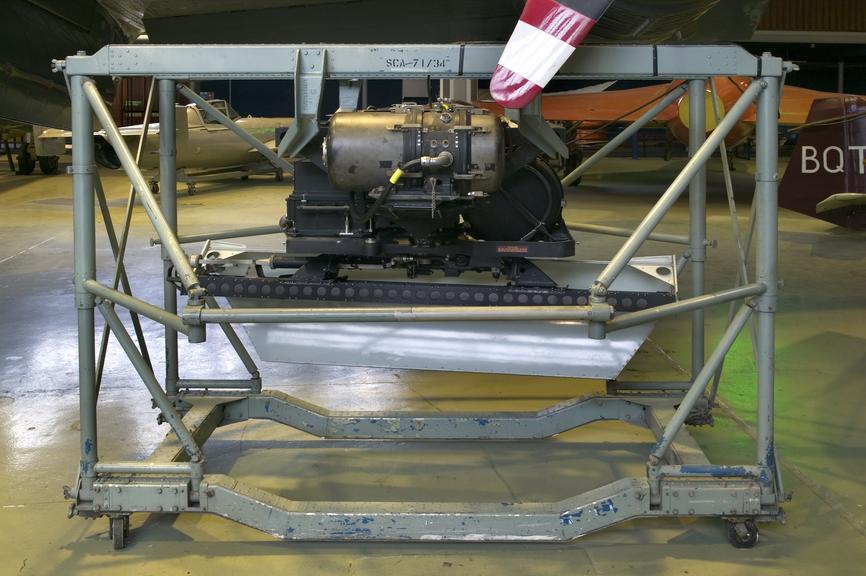
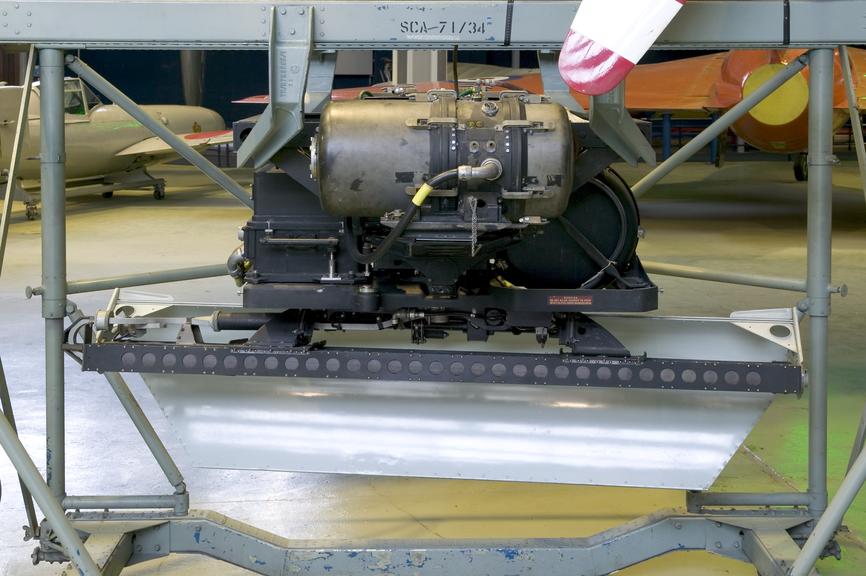
In 1942 the Telecommunications Research Establishment set up a team to develop a means of identifying bombing targets at night and in bad weather. This team was led by Bernard Lovell. Using the cavity magnetron, Lovell’s team produced a 9.1-cm radar that improved greatly the Royal Air Force’s bombing accuracy. Later versions of H2S used reduced wavelengths. The 1.5-cm wavelength set was able to detect rain clouds.
This scanner was fitted to an Avro Vulcan B2 bomber. It is displayed on a servicing trolley.
Former Air & Space Museum collection
[A&S Exhibition Label: How does radar work?
Imagine trying to land a plane the size of a building on a dark and foggy night. How will you ensure that you don’t hit anything? Pilots get around this by using radar.
Radar scanners use radio waves to detect nearby objects. A transmitter located on the scanner sends out radio waves which travel at the speed of light until they hit something. Reflected radio waves are then picked up by the radar system.
The reflected radio waves are displayed on a screen which is monitored by an operator. Blobs of light on the radar could be anything from an oil rig to an enemy aircraft. It takes a skilled operator to tell the difference.
H2S Mark 9A Yellow Aster Bombing Radar
This scanner was fitted to an Avro Vulcan V2 bomber plane. The prototype for the Vulcan was called the Avro 707A and you can see it in this gallery.]
Details
- Category:
- Radar & Radio Location
- Object Number:
- Y2000.269
- Materials:
- metal (unknown), plastic (unidentified), paint, rubber (unidentified) and glass
- Measurements:
-
Overall: 1730 mm x 2350 mm x 1860 mm,
- type:
- aeroplane component

